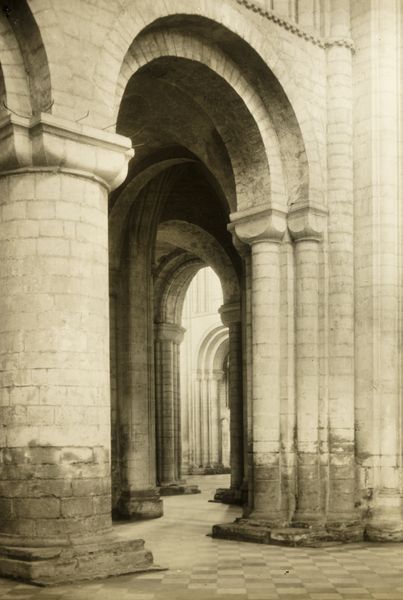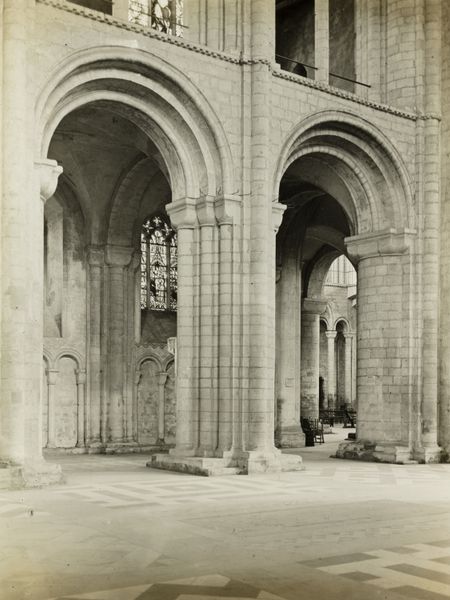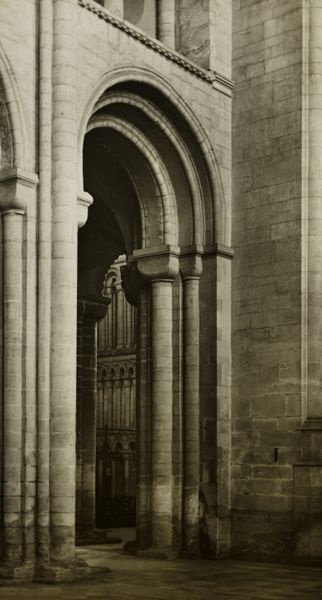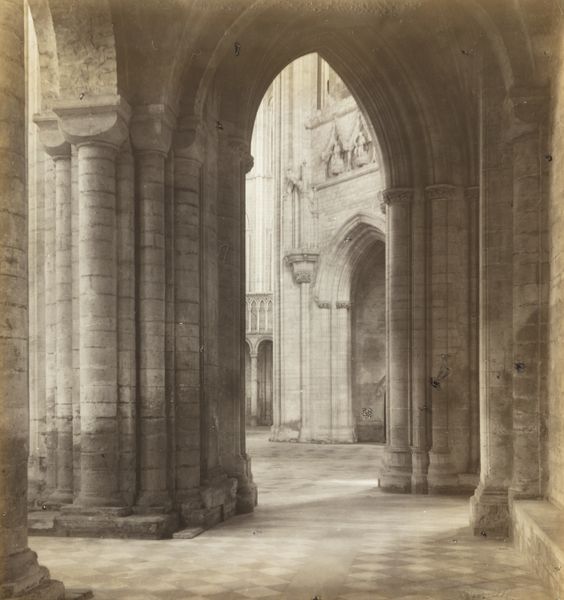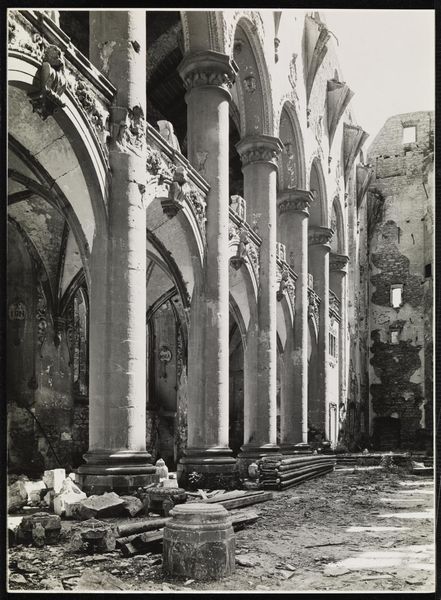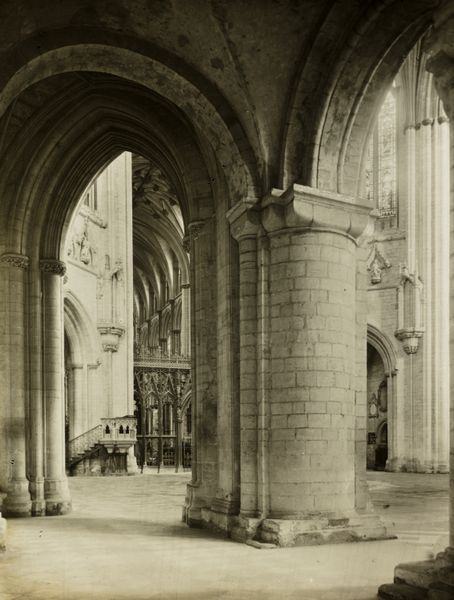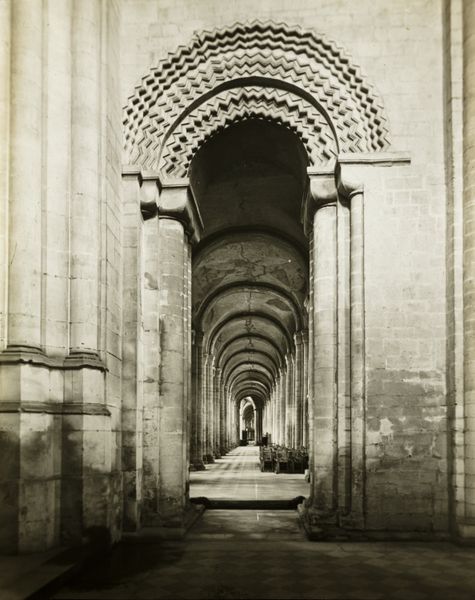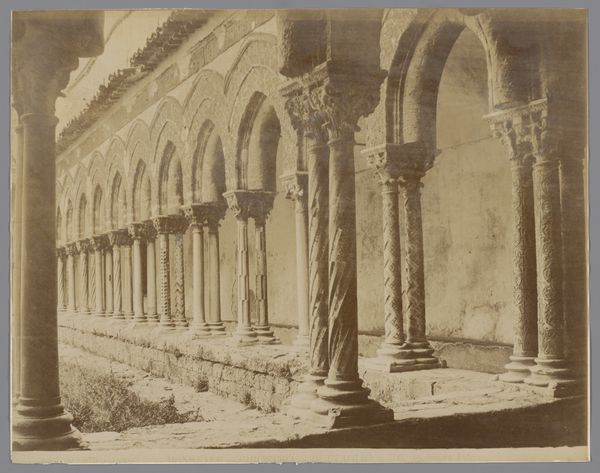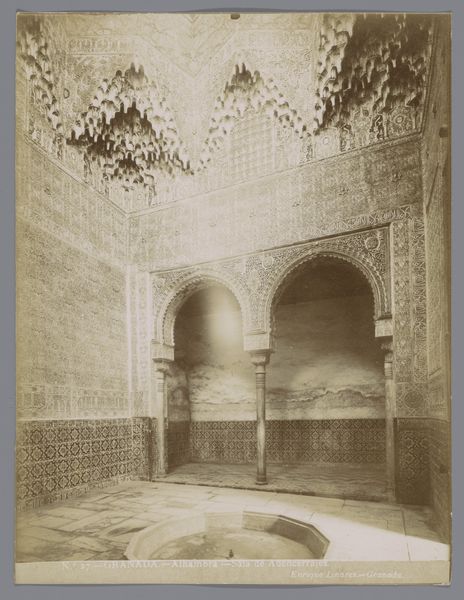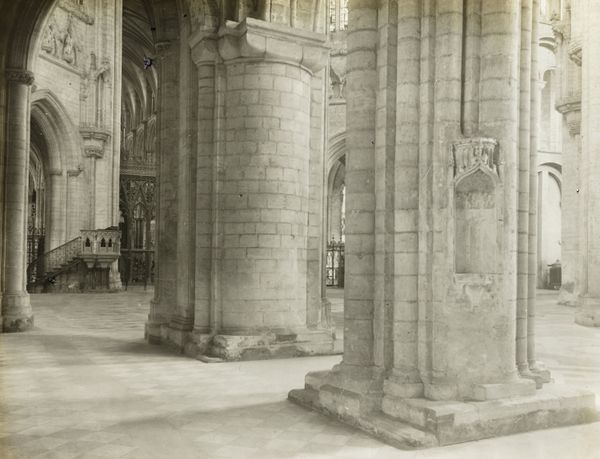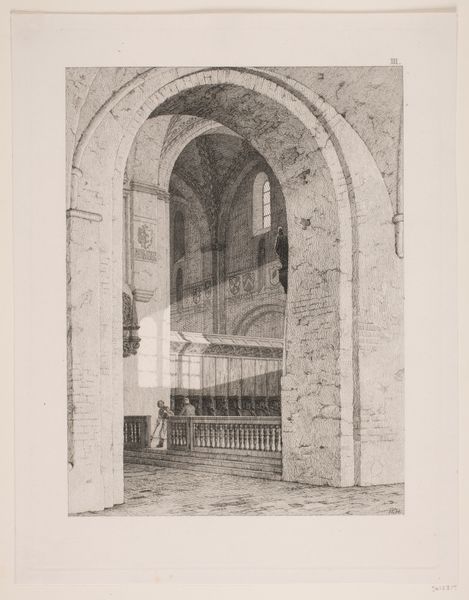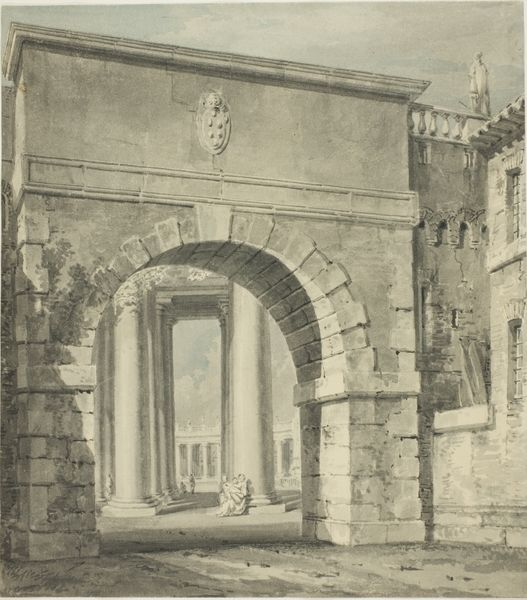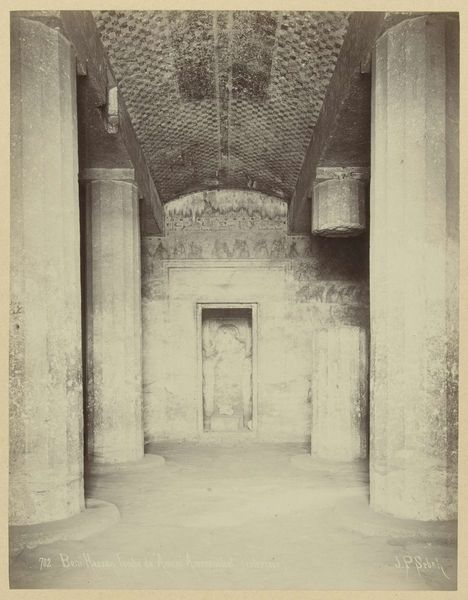
photography, glass
#
tall virtical shape
#
scripture like structure
#
aged paper
#
16_19th-century
#
pictorialism
#
sculpture
#
historic architecture
#
photography
#
glass
#
unrealistic statue
#
england
#
historical font
#
historical building
#
columned text
#
statue
Dimensions: 8.2 × 8.2 cm
Copyright: Public Domain
Editor: This is Frederick H. Evans’s “Ely Cathedral: Nave into North Transept,” a photograph taken in 1891. I’m really drawn to the depth created by the receding arches and columns. What historical forces do you think shaped its creation? Curator: Well, think about the late 19th century. The Arts and Crafts movement was in full swing, reacting against industrialization. How do you see that playing out in this image? Editor: I guess I see it in the attention to the cathedral’s structure, this glorification of craftsmanship from a pre-industrial age. Almost like a yearning for that era. Curator: Precisely! Evans, deeply influenced by figures like John Ruskin, saw the cathedral as a testament to a purer form of labor. But the paradox is, he's using photography, a modern, mechanical process, to document this medieval space. Editor: That’s interesting. So, it’s both a celebration of the past and an embrace of modernity in a way? Was the photograph itself meant to be accessible to a wide audience? Curator: Evans viewed his photographs as artworks first and foremost, not mere documentation. He exhibited them in photography salons, aiming to elevate photography to the level of fine art, similar to painting or sculpture. This photograph also allowed middle-class individuals, those who could not afford to travel, access to a sacred monument. Editor: It’s fascinating how this one image brings together so many social and cultural currents. It has shifted my perspective considerably. Curator: Mine too. The image reflects a desire for authenticity, accessible due to modernization. A dichotomy that exists in art making, even now.
Comments
No comments
Be the first to comment and join the conversation on the ultimate creative platform.
